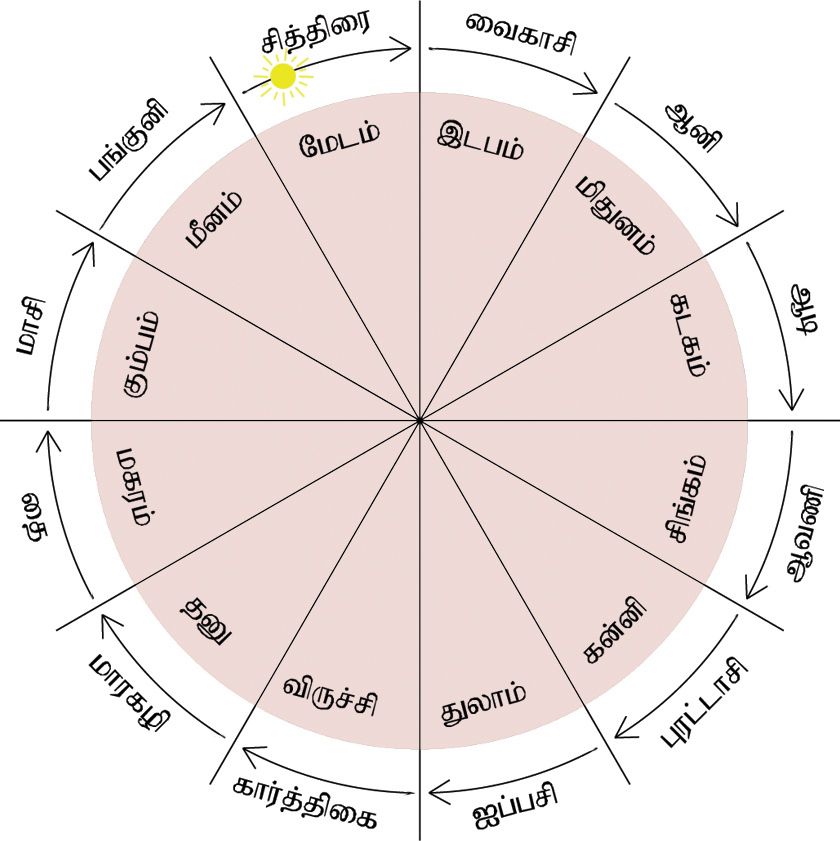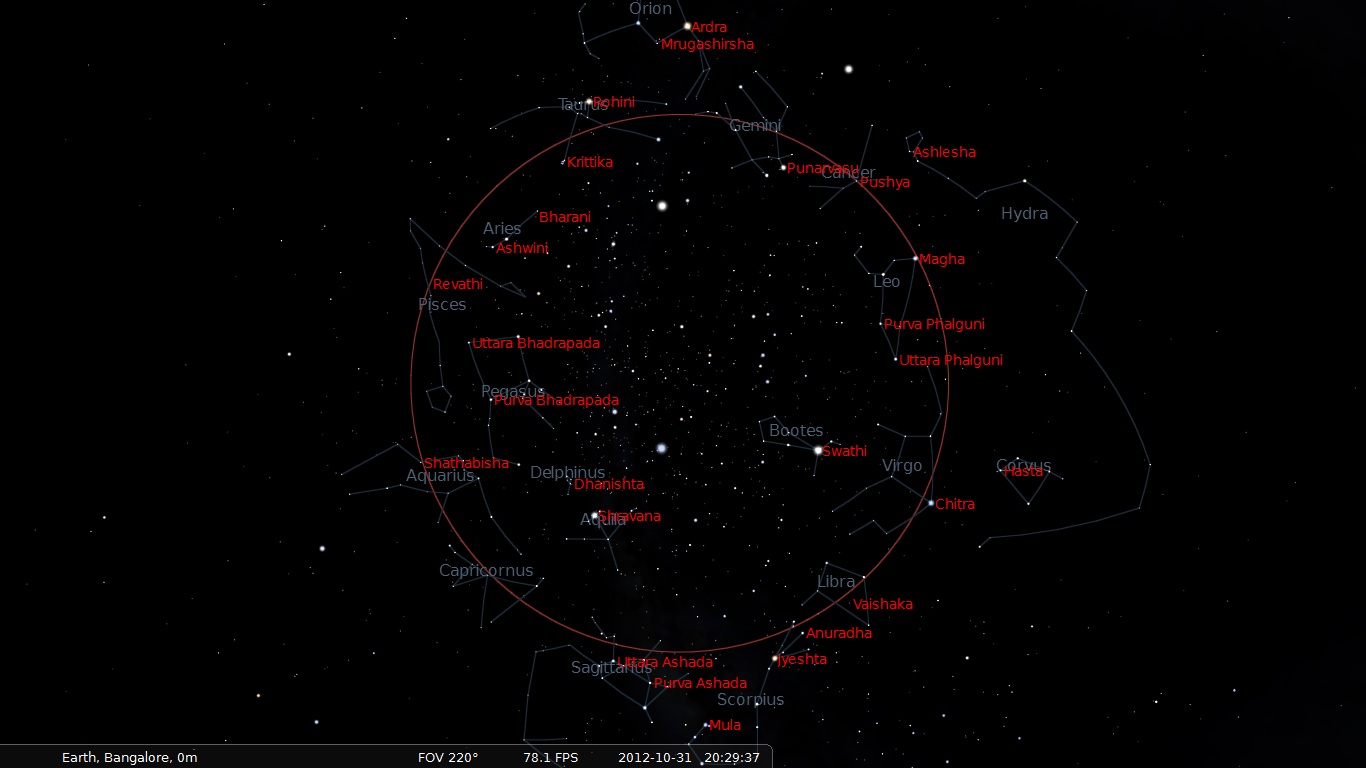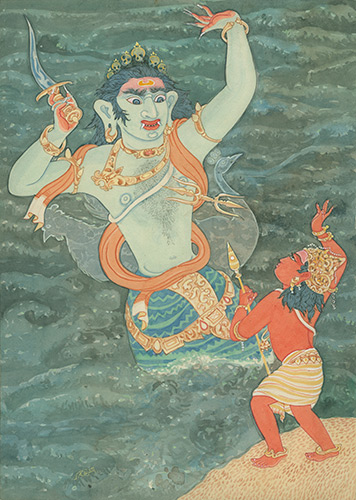|
Thirumalai Kovil
Thirumalai Kovil is a Hindu temple dedicated to the god Murugan, situated at Panpoli, Sengottai in the Tenkasi district of Tamil Nadu, South India. It is about 100 km from Thiruvananthapuram. The temple is situated on a small hill surrounded by the Western Ghats near the border with Kerala. It is one of the Vaippu Sthalam shrines, which is mentoned in a hymn by the saint Nayanar. Description Th temple is a hilltop shrine, with 625 steps of pathway to reach the temple. Earlier, the temple was only accessible by foot. Recently, a road was constructed to the temple on top of the hill. The presiding deity of the temple, Murugan, is known as 'Thirumalai kumarasamy' or 'Thirumalai murugan'. It is a nakshatra temple, associated with the ''nakshatra'' (lunar mansion) Vishakha. Within the temple premises, there is a goddess shrine called 'Thirumalai Kali amman'. This hill temple is surrounded by many coconut plantations and small villages. The current temple structure was ... [...More Info...] [...Related Items...] OR: [Wikipedia] [Google] [Baidu] |
India
India, officially the Republic of India, is a country in South Asia. It is the List of countries and dependencies by area, seventh-largest country by area; the List of countries by population (United Nations), most populous country since 2023; and, since its independence in 1947, the world's most populous democracy. Bounded by the Indian Ocean on the south, the Arabian Sea on the southwest, and the Bay of Bengal on the southeast, it shares land borders with Pakistan to the west; China, Nepal, and Bhutan to the north; and Bangladesh and Myanmar to the east. In the Indian Ocean, India is near Sri Lanka and the Maldives; its Andaman and Nicobar Islands share a maritime border with Thailand, Myanmar, and Indonesia. Modern humans arrived on the Indian subcontinent from Africa no later than 55,000 years ago., "Y-Chromosome and Mt-DNA data support the colonization of South Asia by modern humans originating in Africa. ... Coalescence dates for most non-European populations averag ... [...More Info...] [...Related Items...] OR: [Wikipedia] [Google] [Baidu] |
Kerala
Kerala ( , ) is a States and union territories of India, state on the Malabar Coast of India. It was formed on 1 November 1956, following the passage of the States Reorganisation Act, by combining Malayalam-speaking regions of the erstwhile regions of Kingdom of Cochin, Cochin, Malabar District, Malabar, South Canara, and Travancore. Spread over , Kerala is the 14th List of states and union territories of India by area, smallest Indian state by area. It is bordered by Karnataka to the north and northeast, Tamil Nadu to the east and south, and the Laccadive Sea, Lakshadweep Sea to the west. With 33 million inhabitants as per the 2011 Census of India, 2011 census, Kerala is the List of states of India by population, 13th-largest Indian state by population. It is divided into 14 List of districts of Kerala, districts with the capital being Thiruvananthapuram. Malayalam is the most widely spoken language and is also the official language of the state. The Chera dynasty was the f ... [...More Info...] [...Related Items...] OR: [Wikipedia] [Google] [Baidu] |
Tamil Calendar
The Tamil calendar (தமிழ் நாட்காட்டி) is a Sidereal time, sidereal solar calendar used by the Tamil people of the Indian subcontinent. It is also used in Puducherry (union territory), Puducherry, and by the Tamil people, Tamil population in Sri Lanka, Malaysia, Singapore, Myanmar and Mauritius. It is used in contemporary times for cultural, religious and agricultural events, with the Gregorian calendar largely used for official purposes both within and outside India. The Tamil calendar is based on the solar calendar. Description The calendar follows a 60-year cycle that is also very ancient and is observed by most traditional calendars of India and China. This is related to 5 12-year revolutions of Jupiter around the Sun and one that adds up to 60 years and the orbit of Nakshatras (stars) as described in the Surya Siddhanta. In the Gregorian year , the Tamil year starts on 14 April , Kaliyuga . The Vikrama era, Vikrama and Shalivahana era, S ... [...More Info...] [...Related Items...] OR: [Wikipedia] [Google] [Baidu] |
Kuladevata
A ''kuladevata'' (), also known as a ''kuladaivaṃ'' (), is an ancestral tutelary deity in Hinduism and Jainism. Such a deity is often the object of one's devotion (''bhakti''), and is coaxed to watch over one's clan (''kula''), gotra, family, and children from misfortune. This is distinct from an ''ishta-devata'' (personal tutelar) and a grāmadevatā (village deities). A male deity is called a ''kuladeva'' and female deity ''kuladevi'' (sometimes spelled ''kuldev'' and ''kuldevi'' respectively). Etymology The word ''kuladevata'' is derived from two words: ''kula'', meaning clan, and ''devata'', meaning deity, referring to the ancestral deities that are worshipped by particular clans. Veneration Kuladaivams of the Shaivism, Shaiva tradition are often considered to be forms of Shiva and Parvati, while those of the Vaishnavism, Vaishnava tradition are often regarded to be forms of Vishnu and Lakshmi. Due to the veneration of holy men (''babas'') in several regions of the s ... [...More Info...] [...Related Items...] OR: [Wikipedia] [Google] [Baidu] |
Arunachalesvara Temple
The Annamalaiyar Temple or Arunachalesvara Temple or Tiruvannamalai Temple is a Hindu temple dedicated to the god Shiva and goddess Parvati. It is located at the base of Annamalai hill in the town of Tiruvannamalai in Tamil Nadu, India. It is significant to the Hindu sect of Shaivism as one of the temples associated with the five elements, the '' Pancha Bhuta Sthalas'', and specifically the element of fire, or Agni. Siva is worshiped as Annamalaiyar or Arunachalesvara, and is represented by the ''lingam'', with his idol being referred to as ''Agni lingam''. Parvati is worshipped as Unnamalai or Apitakuchambal, and is represented by the yoni, with her idol being referred to as ''Agni yoni''. The two presiding deities were revered in the 7th century CE Tamil Saiva canonical work, the ''Tevaram'', written by Tamil saint poets known as the Nayanars and classified as '' Paadal Petra Sthalam''. The 9th century CE Shaiva saint poet Manikkavacakar composed the '' Tiruvempavai'' here. The ... [...More Info...] [...Related Items...] OR: [Wikipedia] [Google] [Baidu] |
Kali
Kali (; , ), also called Kalika, is a major goddess in Hinduism, primarily associated with time, death and destruction. Kali is also connected with transcendental knowledge and is the first of the ten Mahavidyas, a group of goddesses who provide liberating knowledge. Of the numerous Hindu goddesses, Kali is held as the most famous. She is the preeminent deity in the Hindu tantric and the Kalikula worship traditions, and is a central figure in the goddess-centric sects of Hinduism as well as in Shaivism. Kali is chiefly worshipped as the Divine Mother, Mother of the Universe, and Divine feminine energy. The origins of Kali can be traced to the pre-Vedic and Vedic era goddess worship traditions in the Indian subcontinent. Etymologically, the term ''Kali'' refers to one who governs time or is black. The first major appearance of Kali in the Sanskrit literature was in the sixth-century CE text '' Devi Mahatmya''. Kali appears in many stories, with the most popular one bein ... [...More Info...] [...Related Items...] OR: [Wikipedia] [Google] [Baidu] |
Vishakha
Vishākhā is a nakshatra in Indian astronomy spread in Tula or Libra (The 7th House of Natural Vedic Astrology). In Hindu mythology, Vishākhā is a daughter of the king Daksha. She is one of the twenty-seven daughters of Daksha, who married the moon-god Chandra. Vishākhā is the sixteenth nakshatra of the zodiac, ruled by the planet Jupiter Brihaspati or Guru, It is also supposed to be the birth star of the goddess Sita. Notable people and entities named Vishākhā * Vishakha Singh (born 1986), Indian film actress, producer and entrepreneur * Vishakha Raut, a Shiv Sena Politician from Mumbai, former mayor of Brihanmumbai Municipal Corporation * Vishakha N. Desai, an Asia scholar with a focus on art, culture, policy, and women's rights *Visakhapatnam, city in Andhra Pradesh *Visakha FC, Cambodian football club *Visakha Stadium, Cambodian football stadium See also *Gopi, Vishaka is also one of the main gopis in Krishna lila, Krishna's muses in Goloka Goloka () or Golo ... [...More Info...] [...Related Items...] OR: [Wikipedia] [Google] [Baidu] |
Nakshatra
Nakshatra () is the term for Lunar mansion in Hindu astrology and Buddhist astrology. A nakshatra is one of 27 (sometimes also 28) sectors along the ecliptic. Their names are related to a prominent star or asterisms in or near the respective sectors. In essence (in Western astronomical terms), a nakshatra simply is a constellation. Every nakshatra is divided into four ''padas'' ( "steps"). The starting point for the nakshatras according to the ''Vedas'' is "Krittika" (it has been argued, because the Pleiades may have started the year at the time the ''Vedas'' were compiled, presumably at the vernal equinox), but, in more recent compilations, the start of the nakshatras list is the point on the ecliptic directly opposite the star Spica, called ''Chitrā'' in Sanskrit. This translates to Ashwinī, a part of the modern constellation of Aries. These compilations, therefore, may have been compiled during the centuries when the sun was passing through Aries at the time of the ver ... [...More Info...] [...Related Items...] OR: [Wikipedia] [Google] [Baidu] |
List Of Natchathara Temples
This is a list of Natchathara (Nakshathra, Stars) Temples of Hindus. These temples are also called Nakshathiram Temples or Birth Star Temples.http://templesoftamilnadu.co.in/nakshathiram-temples-or-birth-star-temples/ Temples of TamilNadu References {{reflist Natchathara temples ... [...More Info...] [...Related Items...] OR: [Wikipedia] [Google] [Baidu] |
Murugan
Kartikeya (/ kɑɾt̪ɪkejə/; ), also known as Skanda ( /skən̪d̪ə/), Subrahmanya (/ sʊbɾəɦməɲjə/, /ɕʊ-/), Shanmukha ( /ɕɑnmʊkʰə/) and Murugan (/ mʊɾʊgən/), is the Hindu god of war. He is generally described as the son of the deities Shiva and Parvati and the brother of Ganesha. Kartikeya has been an important deity in the Indian subcontinent since ancient times. Mentions of Skanda in the Sanskrit literature data back to fifth century BCE and the mythology relating to Kartikeya became widespread in North India around the second century BCE. Archaeological evidence from the first century CE and earlier shows an association of his iconography with Agni, the Hindu god of fire, indicating that Kartikeya was a significant deity in early Hinduism. He is hailed as the "favoured god of the Tamils", and the tutelary deity of the Kurinji region in Sangam literature, whose cult gained popularity later. As per theologists, the Tamil deity of Murugan coalesced ... [...More Info...] [...Related Items...] OR: [Wikipedia] [Google] [Baidu] |
Nayanars
The Nayanars (or Nayanmars; , and later 'teachers of Shiva') were a group of 63 Tamils, Tamil Hindu saints living during the 6th to 8th centuries CE who were devoted to the Hindu god Shiva. Along with the Alvars, their contemporaries who were devoted to Vishnu, they influenced the Bhakti movement in Middle kingdoms of India#The Deccan plateau and South, early medieval South India. The names of the Nayanars were first compiled by Sundarar. The list was expanded by Nambiyandar Nambi during his compilation of material by the poets for the ''Tirumurai'' collection, and would include Sundarar himself and Sundarar's parents. The Nalvar () are the three foremost Nayanars Appar, Sundarar, Sambandar along with Manikkavasagar, Manikkavacakar. History The list of the Nayanars was initially compiled by Sundarar (Sundararmurthi). In his poem ''Tiruthonda Thogai'' he sings, in eleven verses, the names of the Nayanar saints up to Karaikkal Ammaiyar, and refers to himself as "the servant of ser ... [...More Info...] [...Related Items...] OR: [Wikipedia] [Google] [Baidu] |
Vaippu Sthalam
A ''Vaippu Sthalam'', :ta:வைப்புத் தலங்கள் also called a Tevara Vaippu Sthalam, is one of the Hindu temples in South India that is referenced in the songs in the Tevaram, hymns composed in praise of Shiva during the 7th-8th century. The ''Paadal Petra Sthalam'' by comparison are 276 temples that are revered in the verses of Shaiva Nayanars in the 6th-9th century CE. Tevaram The Tevaram is the collection of verses sung in praise of Shiva by the sixty-three Nayanars, most prominent among whom were three Tamil poet-saints named Appar, Sambandar, and Sundarar. The former two lived in the 7th century CE while the latter around 8th century CE. All songs of the Tevaram are believed to be in sets of 10 songs (called ''patikam'' in Tamil). List of Vaippu Sthalams The list of the Vaippu Sthalams is found in each verse of ''Tevaram'' that may be part of verses glorifying other temples (''Paadal Petra Sthalam The Paadal Petra Sthalams (), also know ... [...More Info...] [...Related Items...] OR: [Wikipedia] [Google] [Baidu] |






